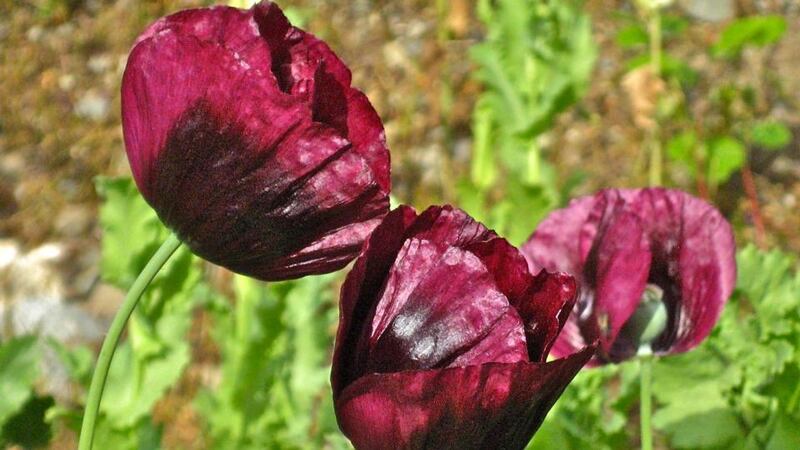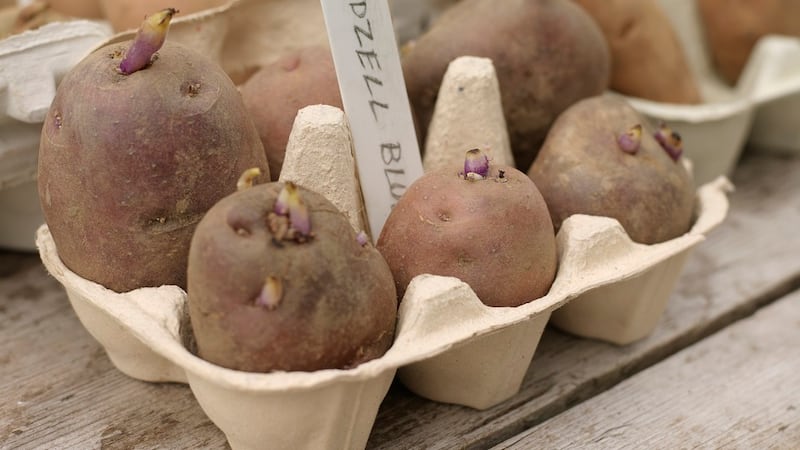If the summer garden is like a glass of Champagne, then flowering annuals are its fizz, its sparkle, its fun. Used with flair and imagination, they are also a gardener’s magic dust, with the power to transform a ho-hum border or seasonal container into something exceptional.
The trick is not to rely on the limited selection available from garden centres in early summer, but to grow your own plants from seed sown in spring. Not only does this make their generous use more affordable, but it also opens up a world of possibilities as regards hard-to-get but interesting varieties and experimental, imaginative planting combinations.
When it comes to sourcing seed, bear in mind that along with the big and better-known companies, there’s a wealth of wonderful small seed suppliers out there, almost all of them with fascinating catalogues that can be easily viewed online.

If that sounds tempting, then get cracking with your orders as it won’t be long before the 2015 sowing season begins in earnest. To inspire you, here’s a small but tantalising look at what’s available.
Cosmos bipinnatus Double Click Cranberries: A recent introduction and one that's on my list of must-haves, this unusual, Fleuroselect Award-winning variety of Cosmos produces its large, ruby-coloured double and semi-double flowers generously on 100-120cm stems from July-November. A half-hardy annual that enjoys fertile soil and full sun, it can be sown under cover and with gentle heat (19-20 degrees) from late February-April for potting on and then transplanting outdoors in late spring.
Alternatively, direct-sow outdoors from April-June. Seed suppliers include DT Brown Seeds and Sarah Raven.
Tagetes patula Cinnabar (Dixter strain): An unusually tall (90-120cm), branching form of the African marigold with yellow-bossed, rusty orange flowers finely edged with gold, this strain is a result of years of careful plant selection on the part of the late Christopher Lloyd.
Give it a moderately fertile, free-draining soil and full sun/light shade, and it will flower from June-November. Sow seed under cover and in gentle heat (15-20 degrees) from March-May to transplant outdoors in late spring. Seeds are available from Special Plants Nursery
Lathyrus odoratus Mollie Rilstone: One of two varieties of sweet pea (the other is Betty Maiden) that well-known British author and flower farmer Georgie Newbery says she would grow before all others. The edges of its deeply-scented cream flowers are suffused with a dusty pink (a two-toned effect known as 'picotee') and appear from June until September.
A hardy annual, an autumn-sowing of sweet pea produces the strongest plants but it can also be successfully sown from now until early April, under the cover of a glasshouse, polytunnel or cold frame, but without extra heat.
Make sure to protect seed or emerging seedlings from mice (to do so, cover or box the pots or root trainers in with wire mesh or very tough garden netting).
Nip out the growing tips of young plants and plant out from April into their final growing position. Sweet pea like moist but free-draining , rich soil in full sun. Seed suppliers include Matthewman’s Sweetpeas and Owl’s Acre Sweet Pea.
Nicotiana sylvestris Only the Lonely: A giant among annuals, this very tall but elegant member of the tobacco family produces large trusses of deeply scented, tubular cream-white flowers that look like shooting stars and that appear from June until September.
Sow seed under cover and in heat (18-22 degrees) from March to May, for potting on and then transplanting outdoors in late spring and once any risk of frost has passed. A half-hardy annual, it does best in fertile, moist but well-drained soil in full sun but will tolerate light shade. Suppliers include Westport-based Seedaholic and Chiltern Seeds.
Petunia exserta: An upright, bushy, rare species of petunia first discovered in Brazil in 2007, this plant produces a profusion of starry, scarlet flowers from summer until the first frost. Surface sow the tiny seed in February-March under cover and with heat (17-21 degrees), for potting on and then planting outdoors in early summer, into a container or a sunny, well-drained spot in the garden.
Pinch out the growing tips of young plants to encourage them to bush up. Average height and spread of 40-60cm. Seed is available from Special Plants Nursery.
Papaver Lauren's Grape: A hardy annual poppy with glaucous-grey foliage and single, golden-eyed blooms that are the most delicious shade of ruby-purple (darkest at their centres), this lovely annual is named after American gardener Lauren Spring, who raised it through careful selection of plants growing in her Colorado garden.
Try pairing it with the sooty-purple, ruffled double-flowers of Papaver Black Peony for a moodily elegant display that will continue through the summer. Both reach an average height of 70-90cm. Direct sow (shallowly) outdoors in April or May. Seed of both varieties is available from Chiltern Seeds and Plant Genesis. Contact details for individual seed suppliers: Seedaholic, (seedaholic.com); DT Brown Seeds (dtbrownseeds.co.uk); Sarah Raven (sarahraven.com); Special Plants (specialplants.net); Chiltern Seeds (chilternseeds.co.uk); Plant Genesis (plantgenesis.co.uk); Matthewman's Sweet Peas (sweetpeasonline.co.uk); Owl's Acre Sweet Peas (englishsweetpeas.co.uk).

This week in the garden
Mid-February is a good time to sow seed of heat-loving plants such as aubergines, tomatoes, peppers and chilli peppers, for growing on under cover in a sunny porch, conservatory, glasshouse or polytunnel. The seeds need to be given generous heat to guarantee successful germination. Here's a guide to the optimum temperatures: aubergines (25-30 degrees), chilli peppers (25-30 degrees), tomatoes (20-25 degrees), peppers (26-29 degrees).
Before plants start bursting into new growth, prune twiggy dogwoods (Cornus Flaviramea, C Midwinter Fire, C Sibirica, C elegantissima) white-stemmed Rubus, Cotinus, Spiraea, Weigela, the butterfly bush (Buddleia davidii), roses, Caryopteris and Mahonia (after it's finished flowering). For pruning details for individual shrubs, see rhs.co.uk
Start chitting early seed potatoes now, placing them in egg cartons (pictured above) or shallow plastic trays and in a bright, frost-free room, which will encourage small green shoots to develop. These will be ready to plant outside from mid-March.
Chitted first-early potatoes can also be planted out into a polytunnel until March to give you a tasty very early crop.
On frosty nights, protect emerging shoots with a layer or two of horticultural fleece.

















